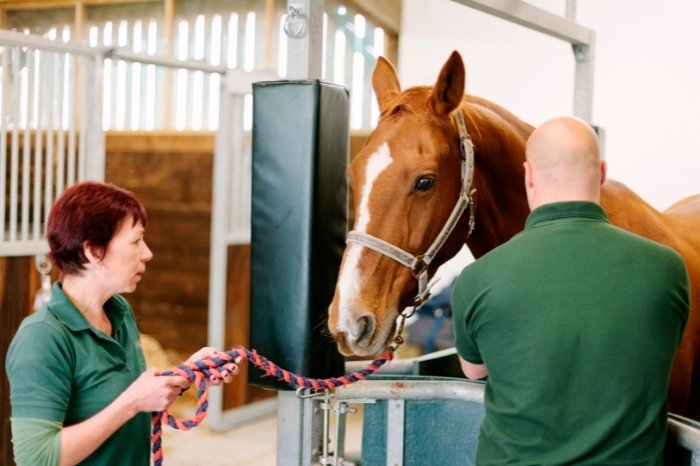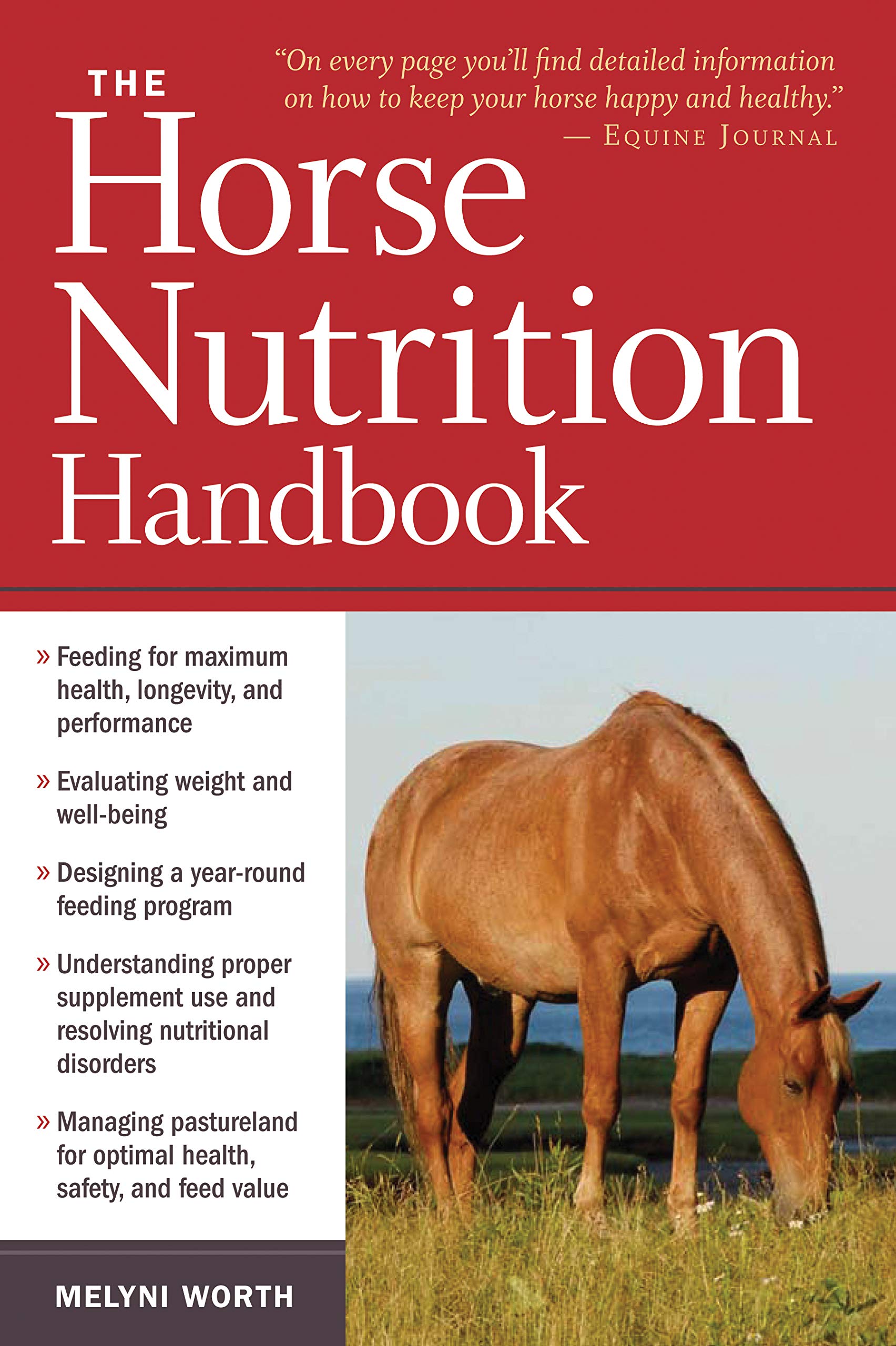Last Updated on October 26, 2022
Selenium toxicity in horses is fortunately not a common condition, and it is more likely to come across a horse that is deficient in selenium. However, if selenium toxicity does occur, the symptoms can be severe and this condition can be fatal if left untreated. Let’s find out everything you need to know about selenium toxicity in horses!
What Is Selenium Toxicity In Horses?
Selenium is an essential trace mineral that horses consume in their everyday diet. This mineral is required for cellular function, helping to make DNA and protecting against cellular damage and infections. Selenium also contributes a vital role in reproduction and is a key component in the metabolism of thyroid hormones.
Most horses consume the daily recommended amounts of 3mg of selenium through their normal diet. If a horse is eating poor-quality forage, it may be necessary to provide additional selenium in the form of a feed supplement or balancer. Selenium deficiency is far more common than selenium toxicity in horses, but it is possible for a horse to consume too much selenium.
Selenium toxicity is normally a chronic long-term condition that occurs from a horse eating high levels of selenium over a long period of time. This will cause elevated levels of selenium in the blood, which can be measured using a simple blood test. This condition is also known as selenosis.
Certain “indicator” plants may reveal high levels of soil-based selenium (such as locoweed), and are common in areas such as Colorado and New Mexico.
Click Here to Get Info About:
- Cellulitis In Horses Treatment Options
- Are Horse’s Spines Straight? Equine Cervical Vertebrae Anatomy Explained!
What Causes Selenium Toxicity In Horses?
Selenium in toxicity normally occurs through the horse consuming food that is high in selenium over a long period of time. In some cases, a horse owner may unintentionally cause selenium toxicity by feeding a combination of food and supplements that creates a high daily intake of selenium. Most feeds are already nutritionally balanced, and adding a vitamin and mineral supplement on top of this can cause high levels to occur.
The other main cause of selenium toxicity in horses is when grazing land is high in selenium. Selenium is stored within the soil and plants utilize this mineral for growth. The horse will then consume these plants and over a long period will gradually develop elevated selenium levels.
It is not always easy to tell if grazing land will give your horse selenosis. There are some plants that thrive in this type of soil, such as locoweed, which can be an indicator of this problem. If your horse develops selenium toxicity, your veterinarian will try to discover where the source of the selenium lies.
What Are The Symptoms Of Selenium Toxicity In Horses?
In the initial stages, selenium toxicity symptoms include changes to the skin and coat. This may include loss of hair in the mane and tail and cracked hooves with poor-quality hoof horn. The coat may look dull and the skin can be dry and flaky.
If a horse has too much selenium side effects over the long term can be quite dramatic and life-threatening. The horse may develop labored breathing, which can progress into respiratory failure and collapse. You may also see neurological symptoms such as staggering, blindness, muscle tremors, and collapse.
Ultimately, if this condition is not treated and the source of high selenium levels is not addressed, this condition can lead to death. If you see any unusual or abnormal symptoms, such as those listed above, it is important to seek veterinary advice promptly.
How Is Selenium Toxicity In Horses Treated?
If your horse has elevated selenium levels, the first step of selenosis treatment is to identify and eliminate the source of excessive selenium. Unfortunately, there is no specific treatment for this condition in horses. The cure relies on removing the source of selenium and providing symptomatic treatment while the horse recovers.
Your veterinarian will decide the best treatment for selenium toxicity based on the severity of the condition and your horse’s symptoms. If the symptoms are very mild, the horse may be able to remain at home during this treatment. However, more commonly horses need to be hospitalized to receive intensive nursing care.
The supportive care for a horse with selenium toxicity can include intravenous fluids to provide hydration and essential electrolytes. If your horse is experiencing respiratory problems, such as difficulty breathing, it may be necessary to provide oxygen therapy. If the horse is unable to eat, then food can be provided via a nasogastric tube.
Some horses with selenium toxicity developed lameness due to poor health conditions. Your veterinarian will work alongside a farrier to help repair and support the hooves. This may include padded supports on the hooves and restricted exercise.
Assessing and modifying your horses diet is vital in curing selenium toxicity. You should carefully examine what is contained in his daily feed and also any additional supplements. The recommended daily intake of selenium for horses is 3mg per day.
Some horse feeds are known to be particularly high in selenium, such as bran and wheat. It is also possible to get your hay tested for selenium levels and you could also consider getting your grazing land assessed.
In terms of reducing selenium levels, some feeds are known to counteract the effects of selenium toxicity. Aim for a diet with high levels of digestible protein. Supplementation with linseed oil meal has also been shown to reduce selenium levels in horses.

Summary – Selenium Toxicity In Horses
So, as we have learned, selenium toxicity in horses is caused when horses consume elevated amounts of selenium over long periods of time. This can come through their normal forage and grazing land, or it may be through excessive consumption of vitamin and mineral supplements. Selenosis in horses is a life-threatening condition that can cause severe symptoms such as respiratory failure and collapse.
We’d love to hear your thoughts on selenium toxicity in horses! Have you ever come across a case of selenium toxicity in a horse or pony? Or perhaps you’ve got some questions about the best way to feed a horse to prevent selenium toxicity? Leave a comment below and we will get back to you!

Kate Chalmers is a qualified veterinary nurse who has specialized in horse care for the vast majority of her career. She has been around horses since she was a child, starting out riding ponies and helping out at the local stables before going on to college to study Horse Care & Management. She has backed and trained many horses during her lifetime and competed in various equestrian sports at different levels.
After Kate qualified as a veterinary nurse, she provided nursing care to the patients of a large equine veterinary hospital for many years. She then went on to teach horse care and veterinary nursing at one of the top colleges in the country. This has led to an in-depth knowledge of the care needs of horses and their various medical ailments, as well as a life-long passion for educating horse owners on how to provide the best possible care for their four-legged friends.
Kate Chalmers BSc (Hons) CVN, Dip AVN (Equine) Dip HE CVN EVN VN A1 PGCE

